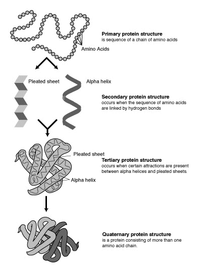
Photo from wikipedia
MOTIVATION Accurate delineation of protein domain boundary plays an important role for protein engineering and structure prediction. Although machine learning methods are widely used to predict domain boundary, these approaches… Click to show full abstract
MOTIVATION Accurate delineation of protein domain boundary plays an important role for protein engineering and structure prediction. Although machine learning methods are widely used to predict domain boundary, these approaches often ignore long-range interactions among residues, which have been proven to improve the prediction performance. However, how to simultaneously model the local and global interactions to further improve domain boundary prediction is still a challenging problem. RESULTS This article employs a hybrid deep learning method that combines Convolutional Neural Network (CNN) and gate recurrent units (GRU) models for domain boundary prediction. It not only captures the local and non-local interactions, but also fuses these features for prediction. Additionally, we adopt balanced Random Forest for classification to deal with high imbalance of samples and high dimensions of deep features. Experimental results show that our proposed approach (DNN-Dom) outperforms existing machine-learning-based methods for boundary prediction. We expect that DNN-Dom can be useful for assisting protein structure and function prediction. AVAILABILITY The method is available as DNN-Dom Server at http://isyslab.info/DNN-Dom/. SUPPLEMENTARY INFORMATION Supplementary data are available at Bioinformatics online.
Journal Title: Bioinformatics
Year Published: 2019
Link to full text (if available)
Share on Social Media: Sign Up to like & get
recommendations!